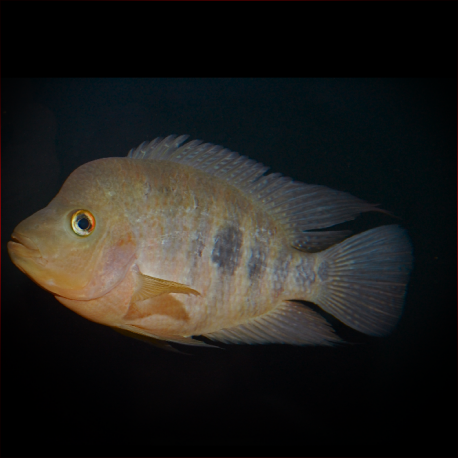More info
Datasheet
| Minimum Tank Size | 300 litres / 79.25 US gallons |
| Maximum Size | 35.0cm / 13.78inches |
| Temperature | 21°C / 69.80°F - 26°C / 78.80°F |
| Hardness | 5.04dgH / 90ppm - 25.04dgH / 447ppm |
| pH | 6.0-8.0 |
General Description
The Midas Cichlid, scientifically known as Amphilophus Citrinellus, belongs to the Cichlidae family under the order Perciformes. Growing up to 35.0cm in length, these fish exhibit various natural color forms and are prized for their vibrant hues, making them a popular choice among cichlid enthusiasts.
Aquarium Setup
Creating an ideal environment for Midas Cichlids involves providing a tank size of at least 300 litres, with rocks, driftwood, and heavy decor like large flowerpots to simulate their natural habitat. Avoid planted setups as these fish are known to rearrange the tank frequently. Visual barriers for other tankmates, strong equipment protection, and regular water changes are crucial elements in the setup.
Behaviour
Midas Cichlids are notorious for their aggressive nature, making tank mate selection a critical aspect. In smaller tanks, their belligerent behavior can pose challenges, but in larger setups exceeding 1000 litres, they can coexist with robust Central American cichlids, large catfish, and fast-swimming species like silver sharks and tinfoil barbs.
Feeding and Diet
These cichlids are unfussy eaters, readily consuming cichlid sticks as a staple diet supplemented with live and frozen foods like earthworms, prawns, and mussels. Incorporating vegetable matter such as peas and spinach is essential, while high-protein foods like beefheart should be avoided to prevent digestive issues. Live fish are not necessary for their diet.
Reproduction & Dimorphism
Breeding Midas Cichlids involves pairing compatible individuals in a spacious tank and providing suitable spawning sites like rocks and flowerpots. Sexing can be challenging, with males often displaying aggression towards females. During courtship, both sexes engage in elaborate behaviors, and parental care post-spawning is remarkable. Sexual dimorphism is visible in mature males through body size, fin length, and the development of a prominent nuchal hump.
Habitat and Distribution
In the wild, the Midas Cichlid inhabits large bodies of water such as lakes, ponds, and slow-moving rivers, favoring rocky areas for foraging. Endemic to Nicaragua and Costa Rica, these fish exhibit specific habitat preferences and behaviors that adapt well to rocky environments for feeding and breeding. Temperature, pH levels, and water hardness within specified ranges are crucial for their well-being.

